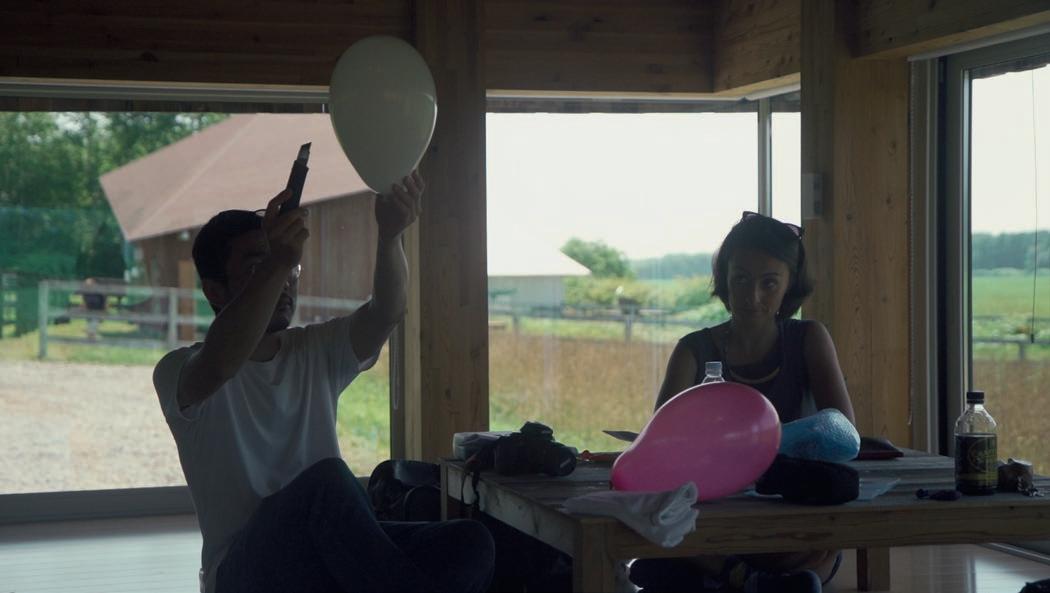
15 minute read
Methodology
1. Using novel methods both to generate acoustic phenomenon and engage audiences
Silo 468
Key to Audialsense’s work is an understanding of site-specific acoustic phenomena, gathered from measured data and digital production tools. By measuring a site’s spatial properties and recording acoustic phenomena in a building’s materiality using contact microphones and digital recording equipment, processing the results and playing them back in the space, it is possible to create new environments in sound.
The acoustic phenomena generated in Silo 468 has its roots in simple synthesizer design. Subtractive synthesis is commonly found in synthesizers developed in the 1960s and 70s, where the partials of a rich harmonic audio signal are modulated by a filter to alter the timbre of a sound. An analogue model of this process is the human mouth, with the vocal chords acting as an oscillator and the mouth and throat as a filter. By changing the shape of the mouth, some harmonic partials are retained and others removed, forming the complex timbres of the words we speak.
An example of using subtractive synthesis as an architectural tool is turning Helsinki’s Silo 468 into a musical instrument and using acoustic phenomena to generate drawings with sound in the space.
10 Spectrogram analysis of a Sine Wave at 440 Hz (frequency vs. amplitude).
11 Spectrogram analysis of a Square Wave at 440 Hz showing upper partials. 12 Spectrogram analysis of a filtered Square Wave at 440 Hz with a centre frequency of 3 kHz.
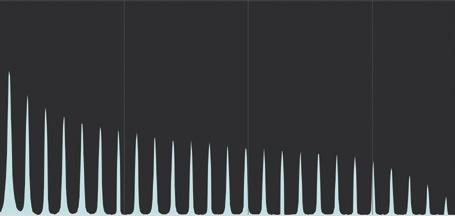

The process for generating the work was to firstly survey the space, understanding its volume and core dimensions. The room was 15,500 m3, 35 m in diameter and 16.15 m high. The interior was fully circular with parabolic soffit. The resonant frequency of the space was the equivalent wavelength of its diameter, 35 m equalling approximately 8.5 Hz. This is well below the threshold of hearing, so the wavelength was scaled in units of ten, generating a base tone of 80 Hz, which is a very low but musically satisfying bass hum.
In order to generate a more elastic soundscape that is both sited in the building’s volume and size, as well as being fluid and engaging, we wanted to let the soundscape be a complementary part of the existing light installation that ebbs and flows with the illumination of the tank.
Building on a base of amplified sine waves, we added additional square and sawtooth waves with a more complex harmonic overtone sequence, so that we had a bed of scaled tones to generate a base drone. These waves were output from speakers in a circular arrangement around the room, constantly on and droning. We took data from the environmental sensors located around the building and used it to modulate a filter of a series of complex waveforms. As the wind eddied around the silo, generating high- and low-pressure points, the sound was modulated by changing the cut-off frequency and resonance of the waves’ upper partials to reflect this environmental change. This created a complex spatially specific timbre in the room, generating a sonification of the local environmental changes. The effect was surprisingly powerful and the resultant soundscape was deeply resonant and in constant flux. The antinodes generated by the non-fluctuating sine waves created a clear geometrical pattern on the floor plane that could be physically felt. Alongside this, the square and triangle waves were gently modulating and shifting, generating a fleeting experience that seemed to tease an occupant by constantly moving around the space.
As a way of physically engaging with the intervention and connecting with the installation, occupants were given inflated balloons and were instructed to walk through the space holding them with their fingertips. When entering an antinode, the wave oscillations of the sine waves excited the air molecules in the balloon, creating an almost electric vibration that clearly defined the spatiality. Engaging in something so ephemeral and invisible was an unexpected and powerful physical experience.




13 Silo 468, Helsinki, 2016. Illustration showing the perceived nodal response to the site shown arrayed using speakers, generating emergent architectures.
13
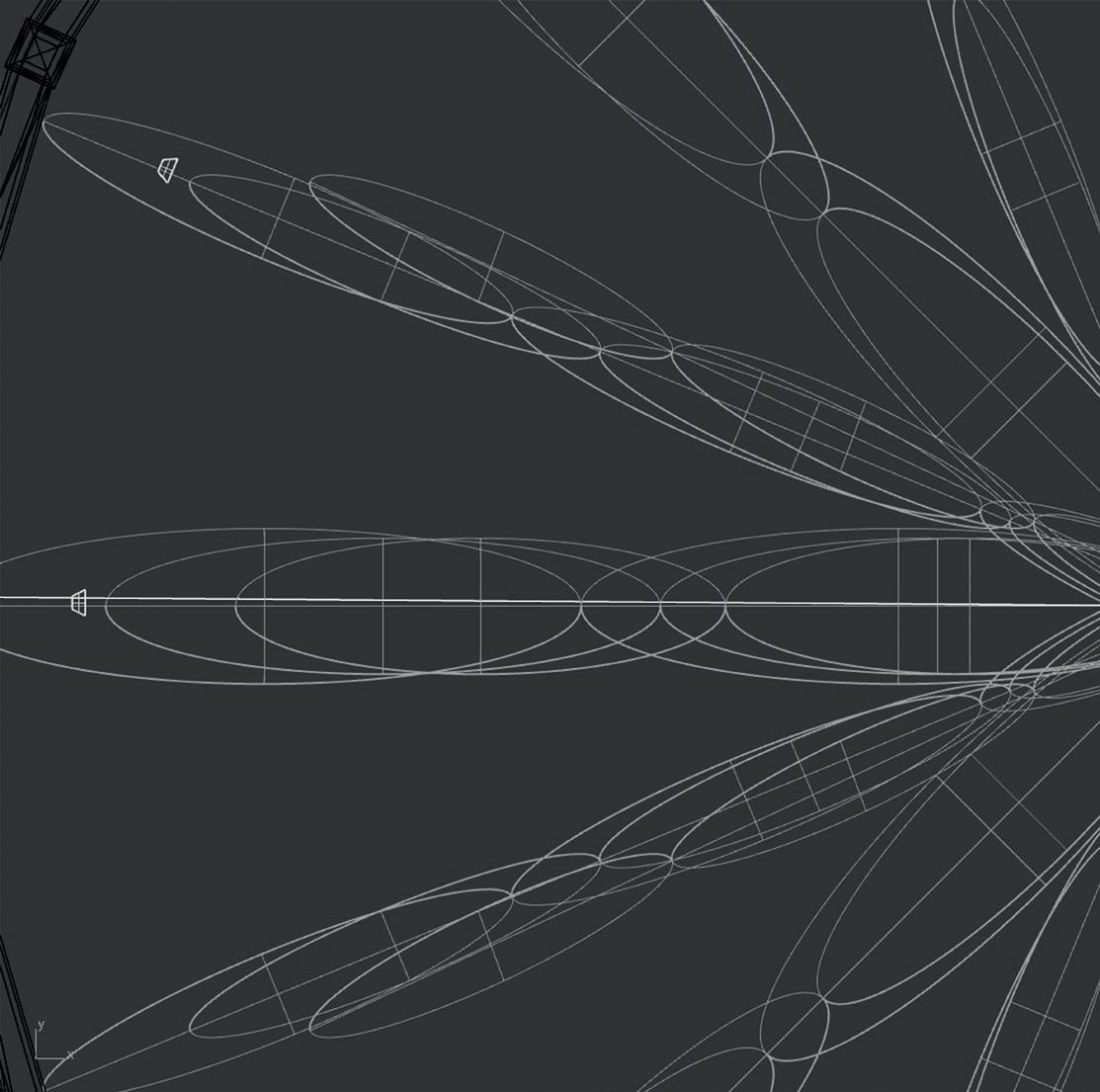
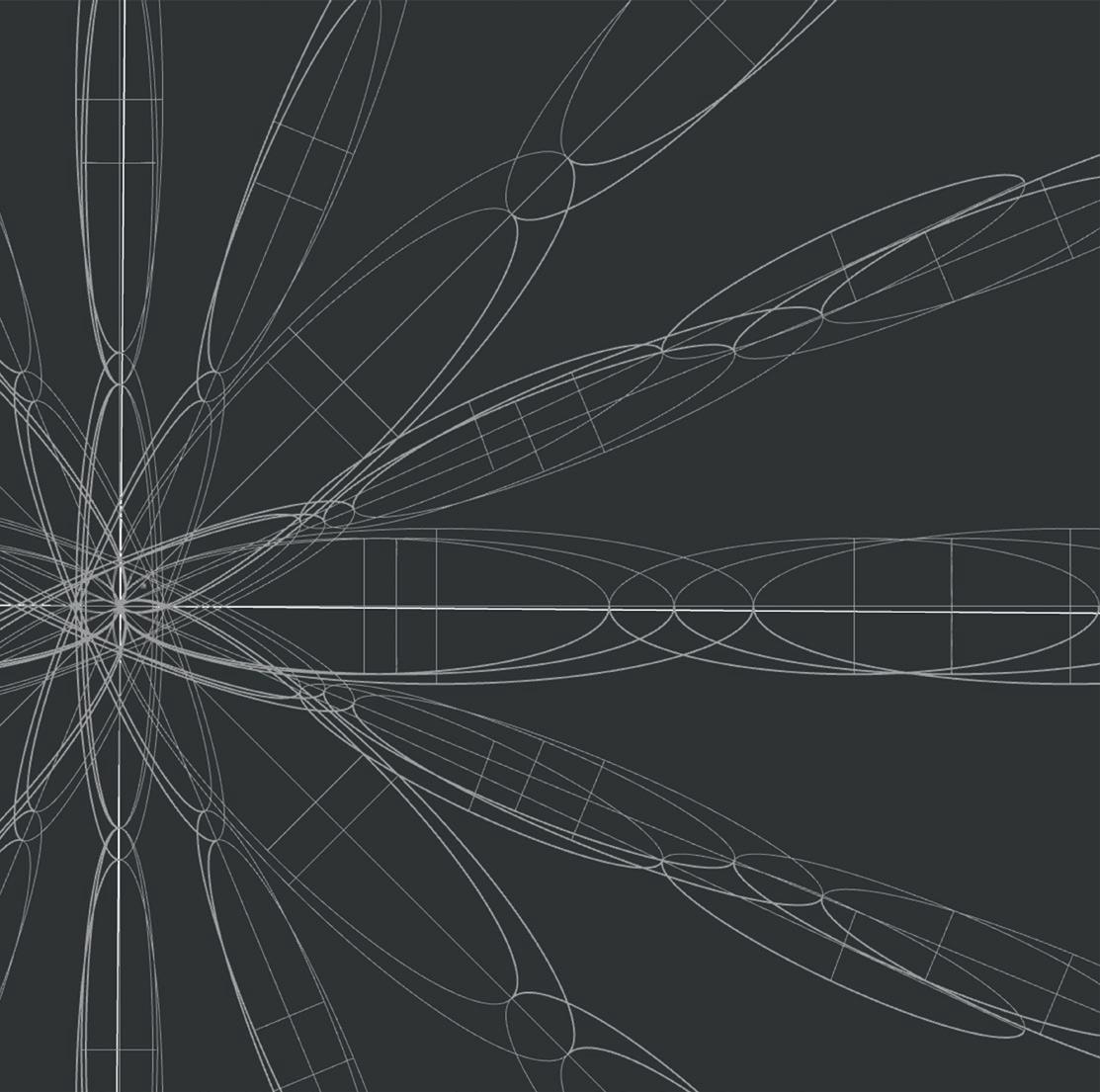
14 Silo 468, Helsinki, 2016. Modelling of apparent nodes and antinodes.
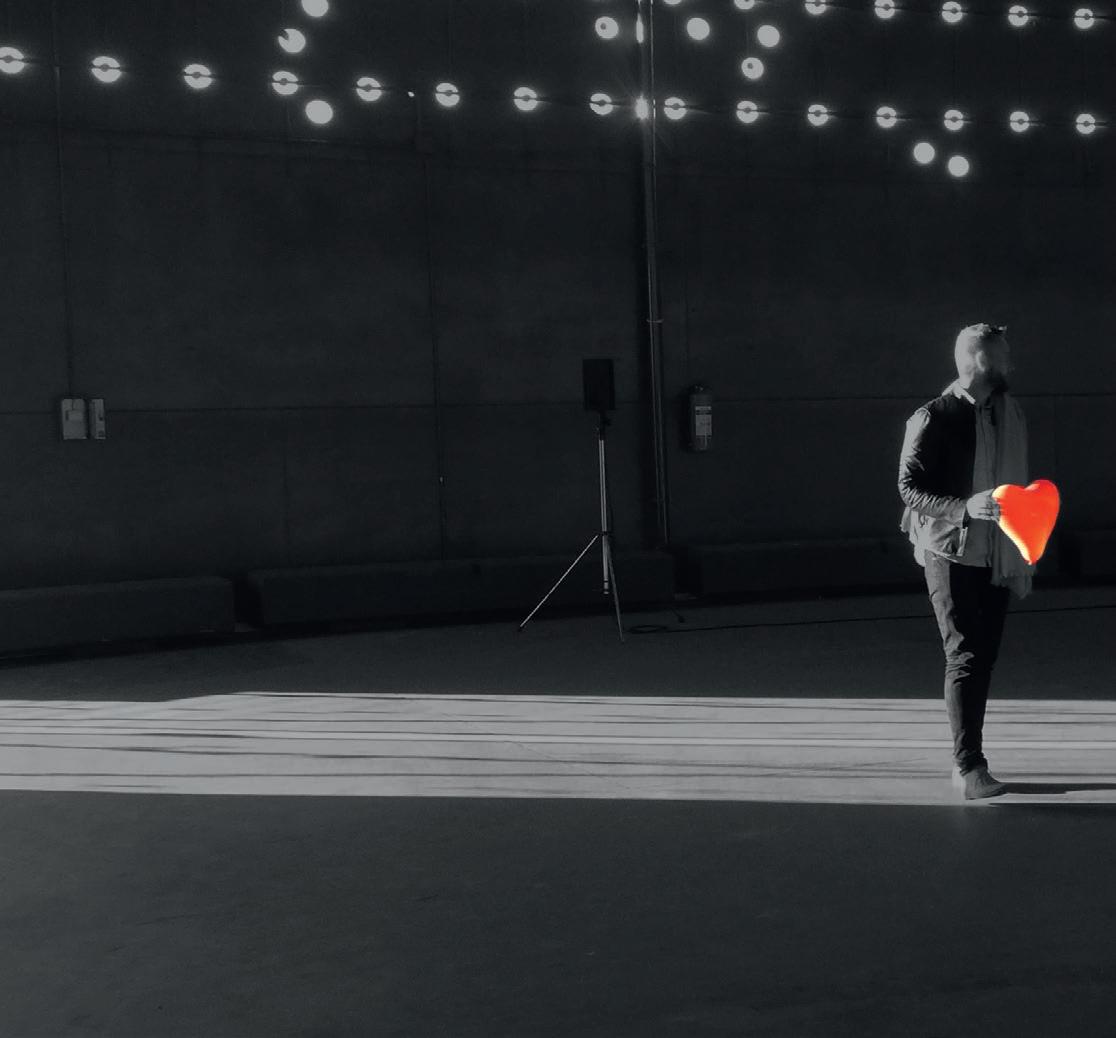

15 Silo 468, 2016. Using balloons to map room response.
Gjallarhorn
In the 2016 project, Gjallarhorn, we were very lucky to have access to the big engines on permanent display in the Science Museum. We wanted to extract the structural borne noise from the engines and play the sounds back into the gallery space. We wanted to make the sounds more site specific, rather than playing them back in a straight way, and in a subtractive way only play back frequencies that match the resonant frequencies of the gallery space.
We used contact microphones to extract the sounds from the engines. These are magnetic microphones that pick-up material resonances rather than air-borne frequencies, as typical microphones do. It is worthy of note that the mechanics who maintain the engines saw us use this technique and commented that for quick diagnostic purposes they insert the rounded handle of a screwdriver into an ear with the other end on the surface of the engine. They can then listen for any issue that may be invisible to the eye.
16 Gjallarhorn, Science Museum, London, 2014. Collecting data: different points yielded different sounds.
17 Gjallarhorn, Science Museum, London, 2014. Collecting data: powerful pressurised steam from boilers.
18 (overleaf) Collecting data in the Science Museum, London, for Gjallarhorn, 2014.
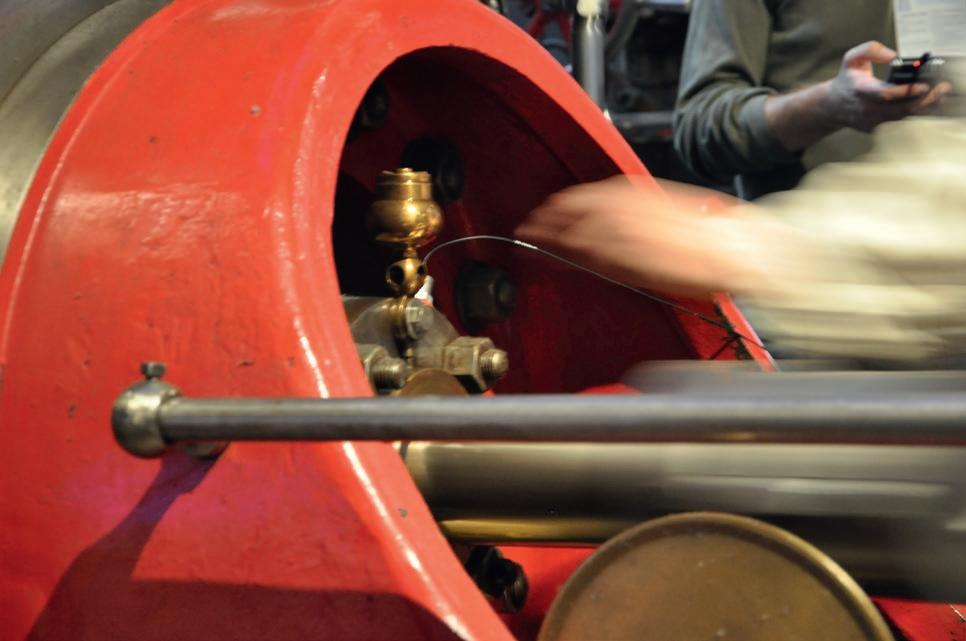
16

17
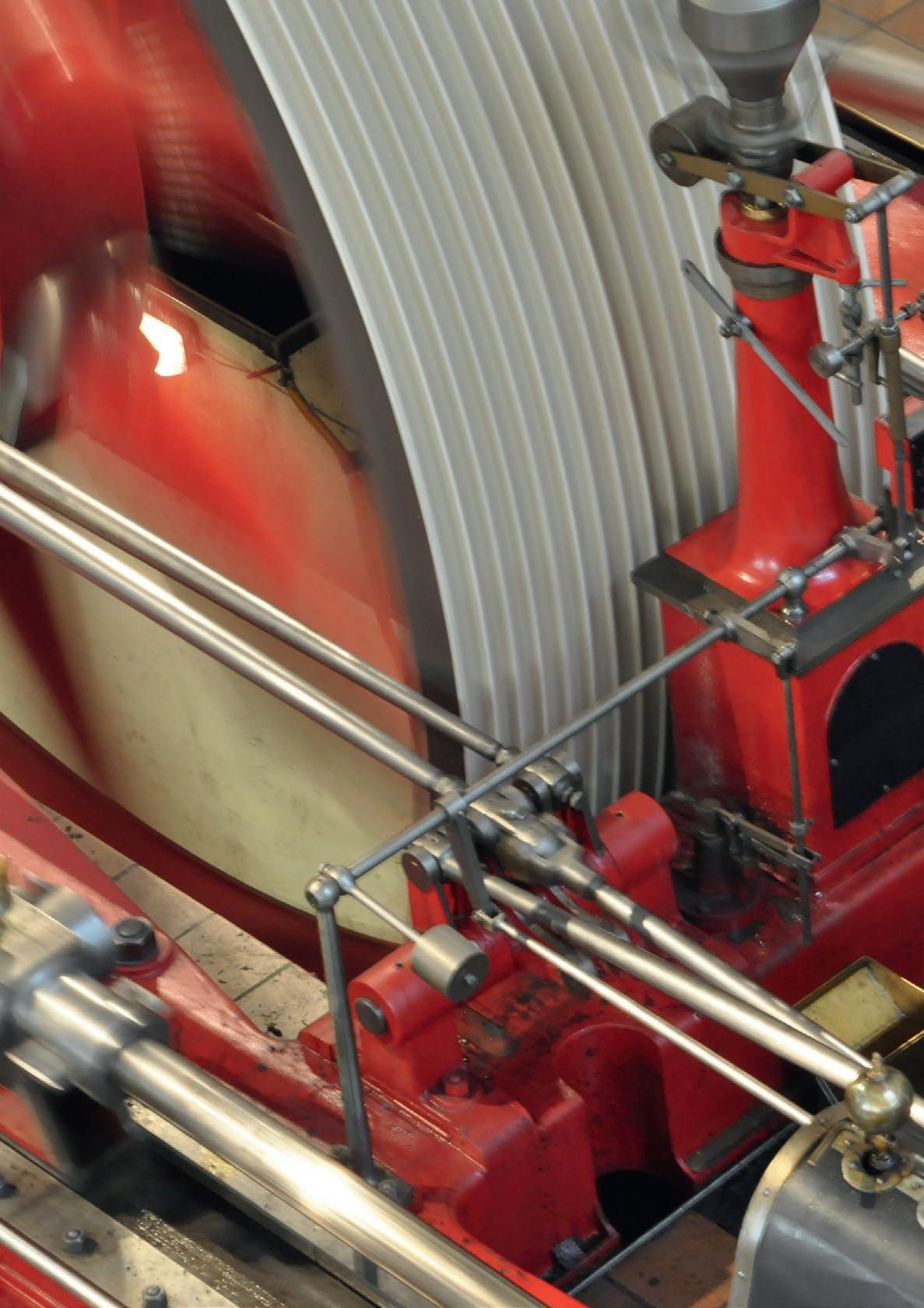
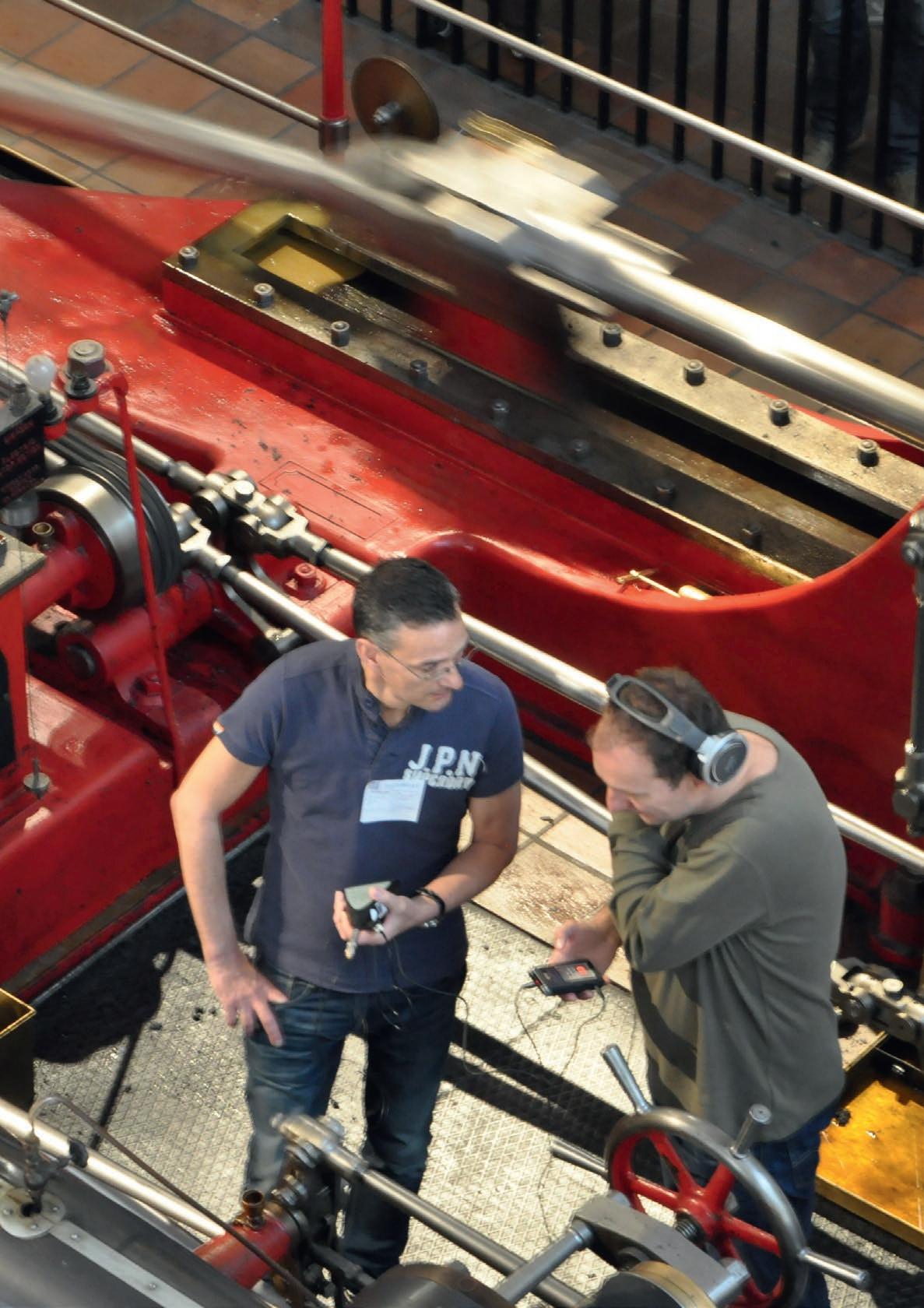
Gallery One
This installation was intended to build on the principles undertaken in Gjallarhorn, extracting the physical sounds of the building and playing them back into the space rather than using mechanically sourced noises and tuning into their resonant frequencies. Contact microphones were used to extract sounds from as many resonant surfaces as could be found: balustrades, lift linings, floor tiles, etc. The sounds were then used as the basis of a spatialised generative composition, bisecting and quartering the space on a quadraphonic sound system that provided flexibility to create sonic figures in the room.
The acoustic phenomena generated in Gjallarhorn and Gallery One question and creatively use a common failing in architectural projects – structure-borne sound – that is usually designed out. The Building Regulations Approved Document E defines structure-borne sound as ‘sound that is carried via the structure of a building’. While insufficiently insulated vibrating materials will generate audible noise that can be annoying, Gjallarhorn and Gallery One use these sonic phenomena creatively.
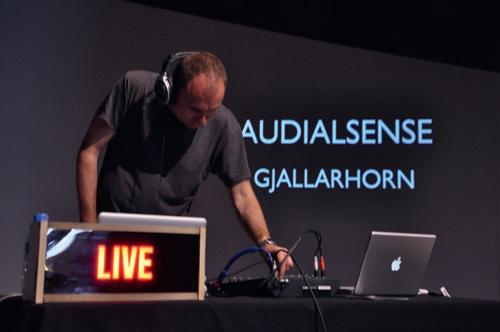
19 Gjallarhorn live at the Science Museum, London, 2014.
20 Gjallarhorn installation with the Denman Horn, Science Museum, London, 2014.
21 Listening for nodes onsite at the Science Museum, London, 2014.
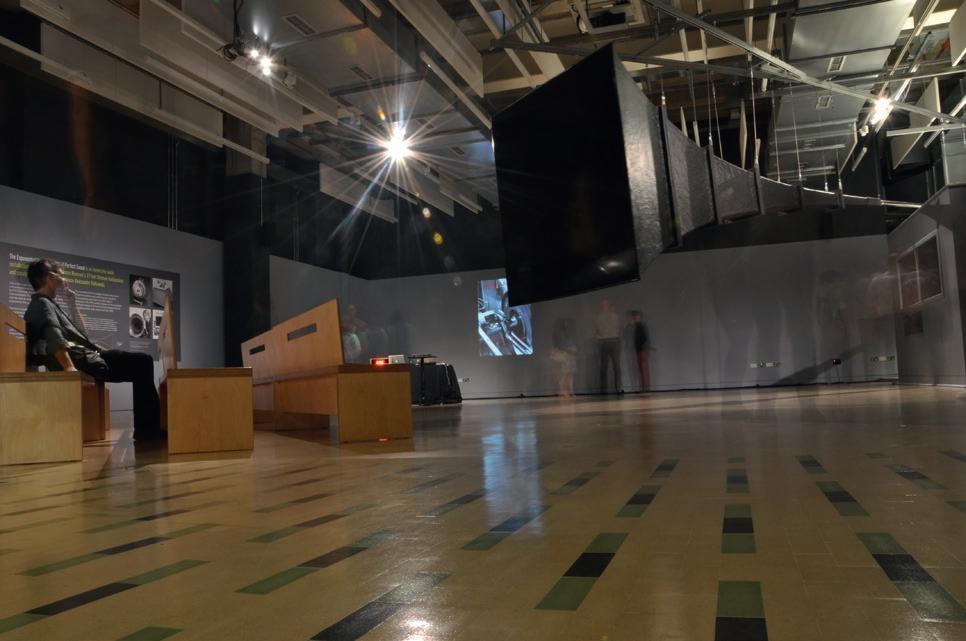
20
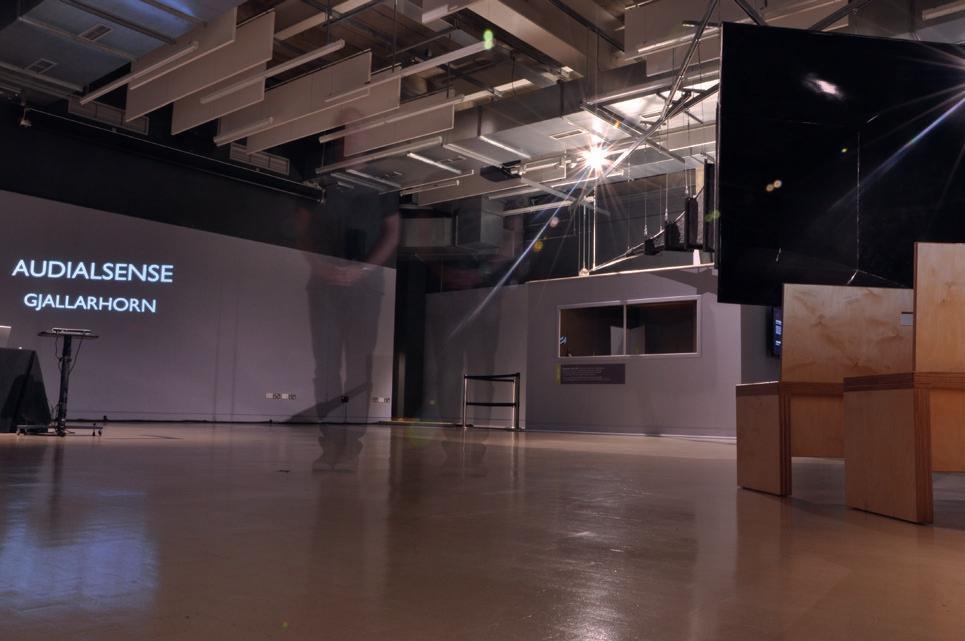
21
2. Acoustic research with acousticians, testing, surveying and developing performance parameters of sites that are not traditional acoustic spaces
Musicity
For the Musicity, different processes and technologies were developed and employed to choose, survey and simulate specific spaces for musicians to respond to acoustically. The aim was to enable musicians and composers to write for the acoustics of a specific space and generate a unique piece of music that is intrinsically linked to the site.
First, a series of spaces were selected for use by musicians, chosen for specific qualities that may positively inform a creative process. Once the spaces were selected, they were acoustically tested: in some cases (Musicity Southwark 2017 and Musicity x MEMU) by a balloon-pop impulse response and in others (Musicity Southwark 2018 and Musicity x Culture Mile 2019) by a team of world-leading acoustic consultants at Arup. The acoustic test is commonly used in surveys of concert halls and other acoustically critical spaces. For the tests undertaken by Arup, a sine sweep was played into the room; a pure tone that rises from 20 Hz to 20 kHz over 20 seconds. The sweep is recorded, and then analysed for acoustic properties: reverberation, clarity, definition, etc. The locations of the speaker and the receiving four-channel microphone are called the ‘source’ and ‘receiver’ positions respectively. These also represent the spatial relationship between a performer and a listener or audience.
By use of B-format impulse responses taken from specialist surveys, it was possible to develop acoustic simulations of spaces via acoustic virtual reality (AVR). This allowed musicians to engage musically with a space without visiting it.
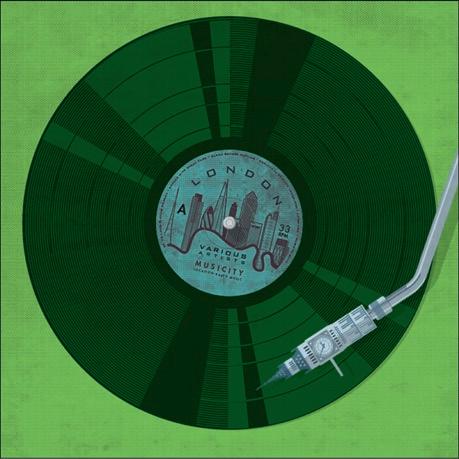
22 The Musicity logo.
23 Musicity Southwark, London, 2018. Acoustic survey of White Cube Bermondsey, site of Hatis Noit’s ‘White Cube’.
24 (overleaf) Spectrum analysis of a sine sweep.
23
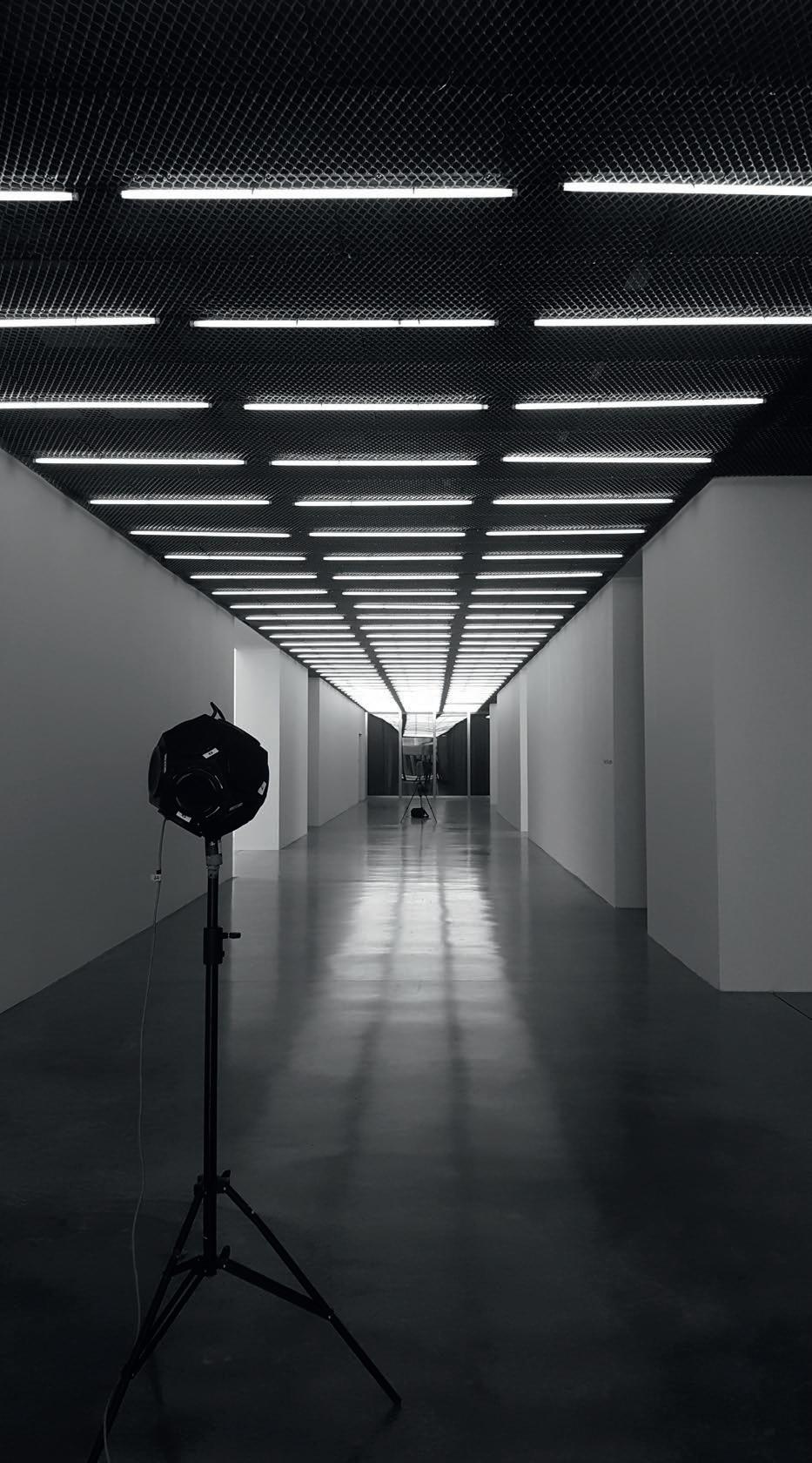


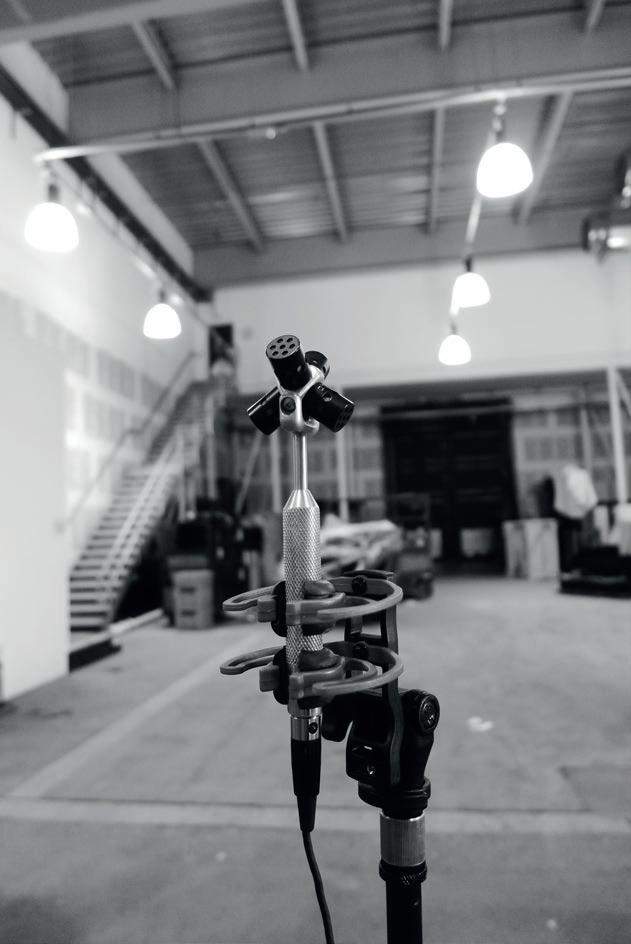
25
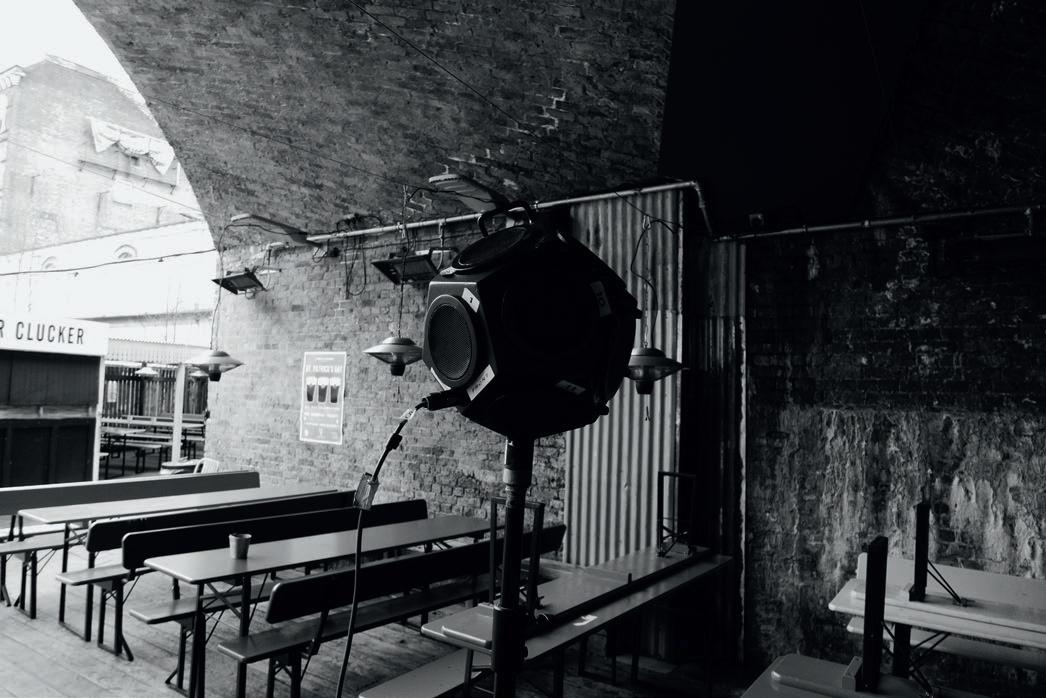
25 Musicity, testing a four-channel omnidirectional microphone at UCL, 2018.
26 An omnidirectional sound source.
3. Deploying technology to simulate specific spaces for musicians to respond to acoustically
Acoustic parameters developed from site surveys are important to both acousticians and architects. They inform how a space works acoustically and what interventions are to be undertaken to optimise the space for use. For creative use, however, it is critical that a musician uses their ears to develop an intuitive response to a space. In addition to the acoustic parameters, the sine sweep from the acoustic survey can produce what is called an impulse response. This is a computer-generated retort or snap that contains 3D spatialised acoustic data from the space. It is fairly meaningless on its own but allows a space to be convolved in real time when dropped into a convolving reverb effect in a studio environment, which digitally simulates the acoustics of the space.
Convolution is a process that is getting much more common in studios and can be used to generate differing effects, from outlandish sounds to the simulation of space. Most software has the ability to import impulse responses, e.g. Logic Pro’s Space Designer, turning them into reverbs defined by physical space. This allows a musician to use their intuitive responses in the creative process without having been in the space or having any prior knowledge of it. The process generates a unique piece of music, linking site and sound.
As the sites chosen for Musicity are working spaces, and have considerable practical limitations for live performance, the music that was generated via this process could not be performed live, creating considerable problems with dissemination. This was solved by making the tracks available online, downloadable via geotagging. The music is available for download when a listener is on the site that was used for the composition.
Musicity Southwark In the spring and early summer of 2017 |and 2018, as part of the London Festival of Architecture, Musicity commissioned a series of music by artists linked to the London Borough of Southwark. Spaces included The Shard and Tate Modern, as well as smaller more intimate spaces such as Hopton’s Almshouses. These spaces were used as sites for musical intervention.
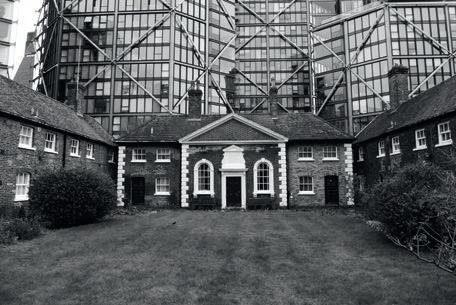
27
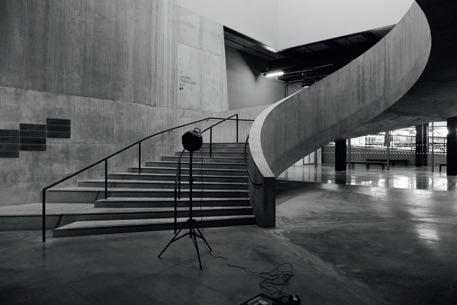
28

27 Musicity Southwark, London, 2018. Hopton’s Almshouses, site of Shamus Dark’s ‘Bank Side Story’.
28–9 Musicity Southwark, London, 2018. Acoustic surveys of the Switch House and Turbine Hall, Tate Modern, site of Langham Research Centre’s ‘Terminal Voltage Traces’. 30 (overleaf) Musicity Southwark, London, 2018. Acoustic survey of Flat Iron Square, site of The Memory Band’s ‘Flat Iron Square’.

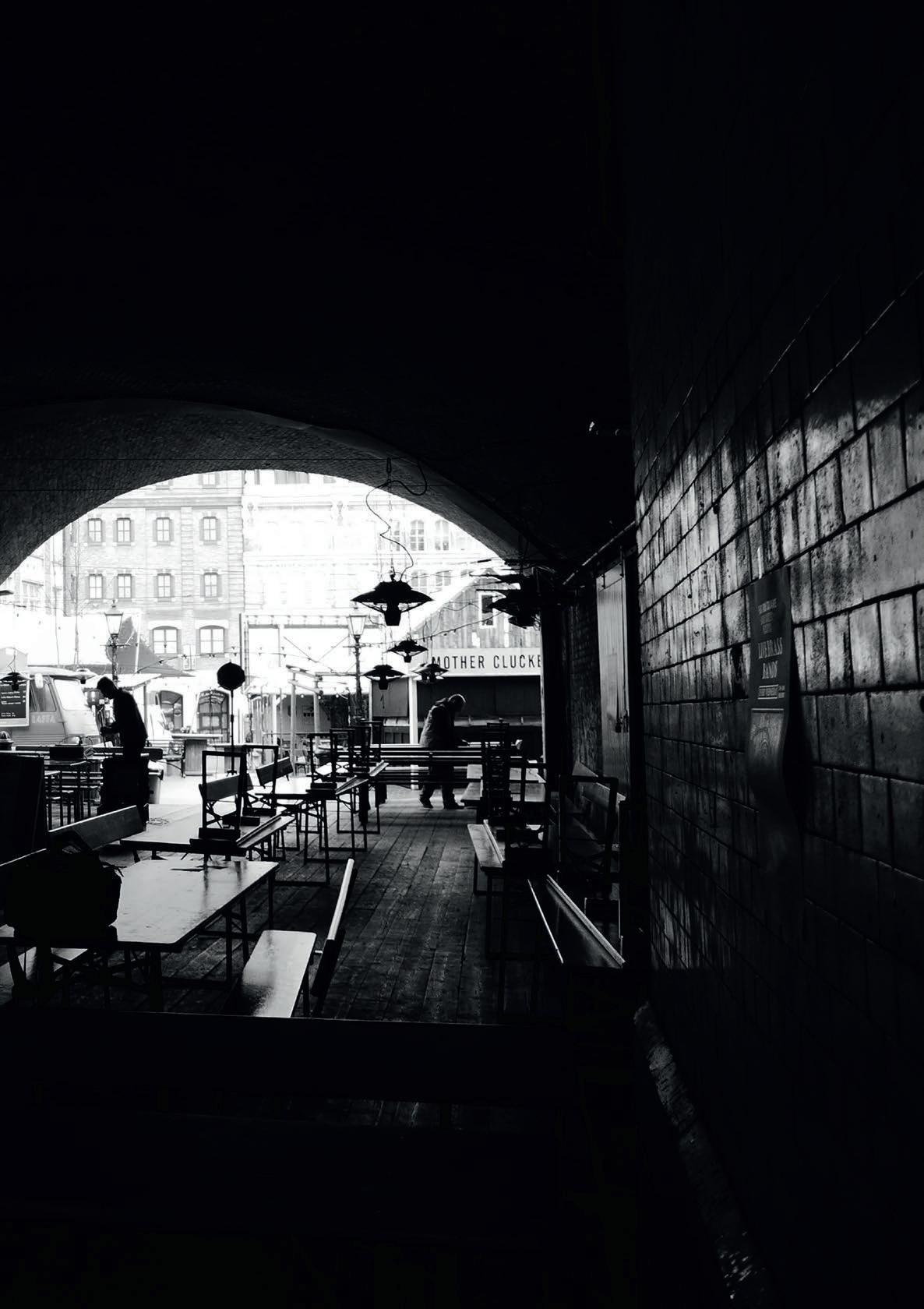

31 Spectrum analysis of Langham Research Centre’s composition for the Turbine Hall, Tate Modern, London.
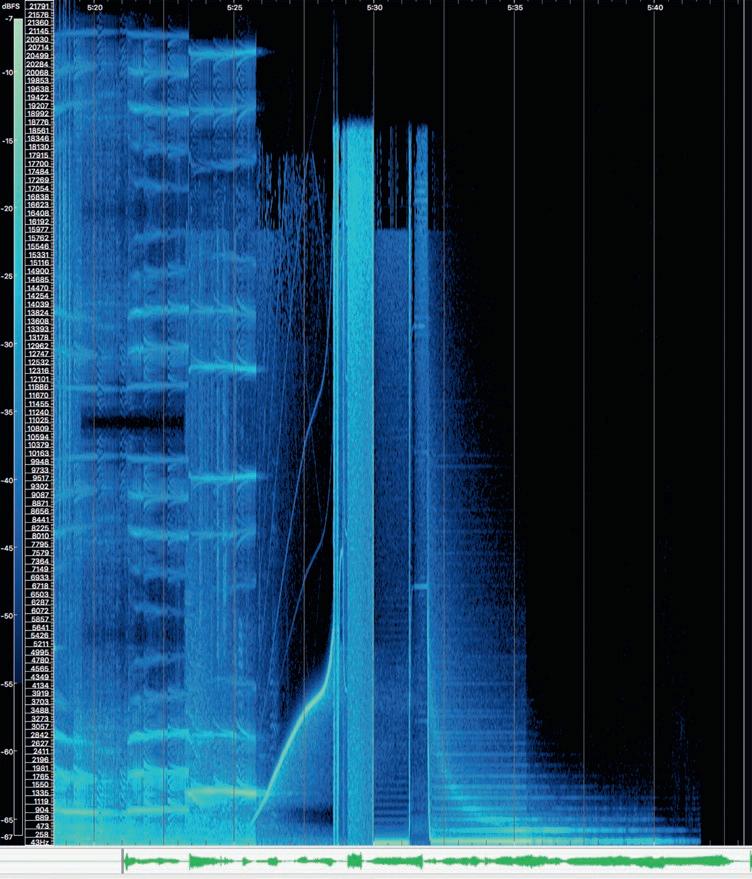
Musicity x Culture Mile
As part of the Sound Unbound festival held at the Barbican in Spring 2019, Musicity commissioned ten pieces of music by ten artists linked to the Barbican site.
Asking an artist to fully engage with an unfamiliar process has its particular challenges. Each artist developed a track in their studios using equipment that they were familiar with, creating a unique series of results. Emma Kate Matthews developed her track to be coincident with the nodal frequency of the Barbican’s Lower Ground Foyer, which emerged from the impulse response. This created an intense bass response:
The low clarinet and bowed bass parts provide frequencies which sit below the majority of the foyer’s ambient noise; from air handling units, conversation and catering. The low register in which the music is written, deliberately coincides with the most intense region of the impulse response file, as visualised by the spectral frequency display. This means that the music contains a lot of energy around the frequencies which the foyer is particularly reflective to, capitalising on the reverberant potential of the space and thus its ability to blend sounds as they are reflected, as if the foyer has the ability to become an instrument itself (Matthews 2019).
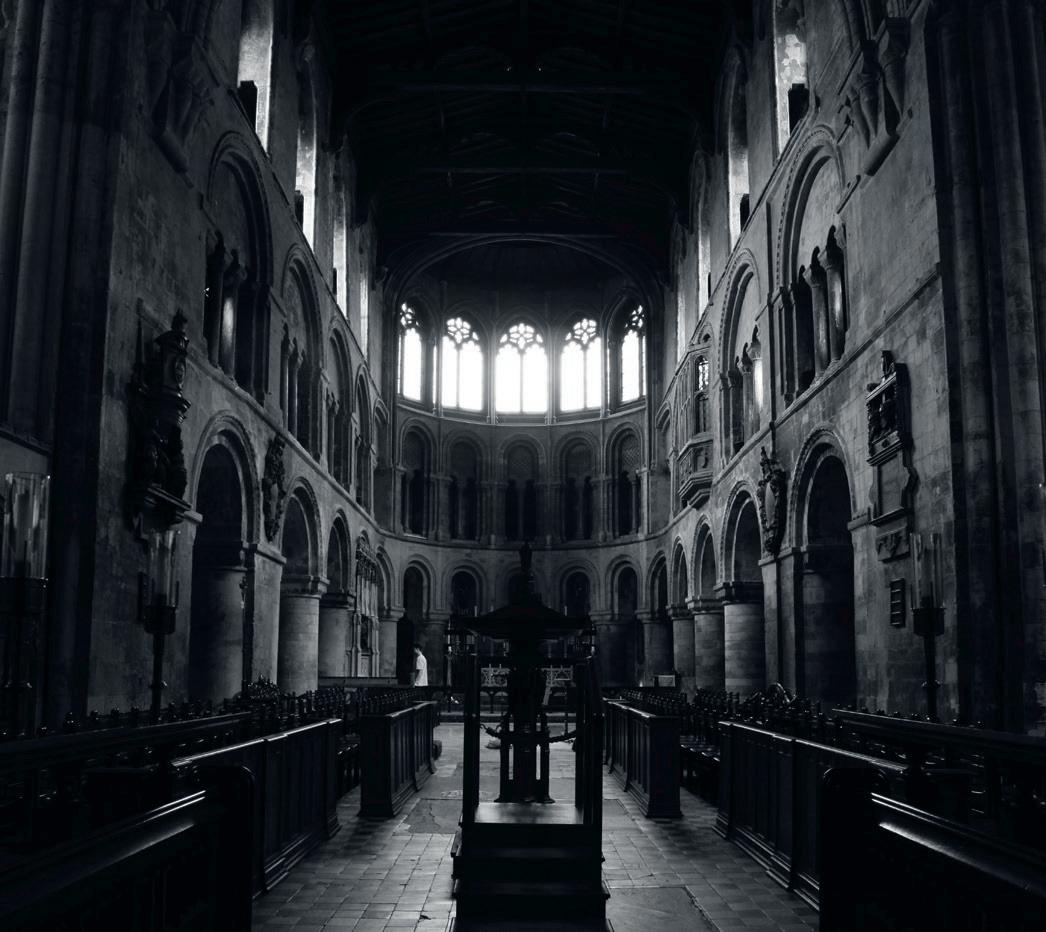
32 Musicity x Culture Mile, Barbican, London, 2019. Interior of St Bartholomew the Great, London, site of Kassia Flux’s ‘Rahere’.

33 Musicity x Culture Mile, Barbican, London, 2019. Acoustic survey of Beech Street Tunnel, site of Howlround’s ‘Heavy Works’.
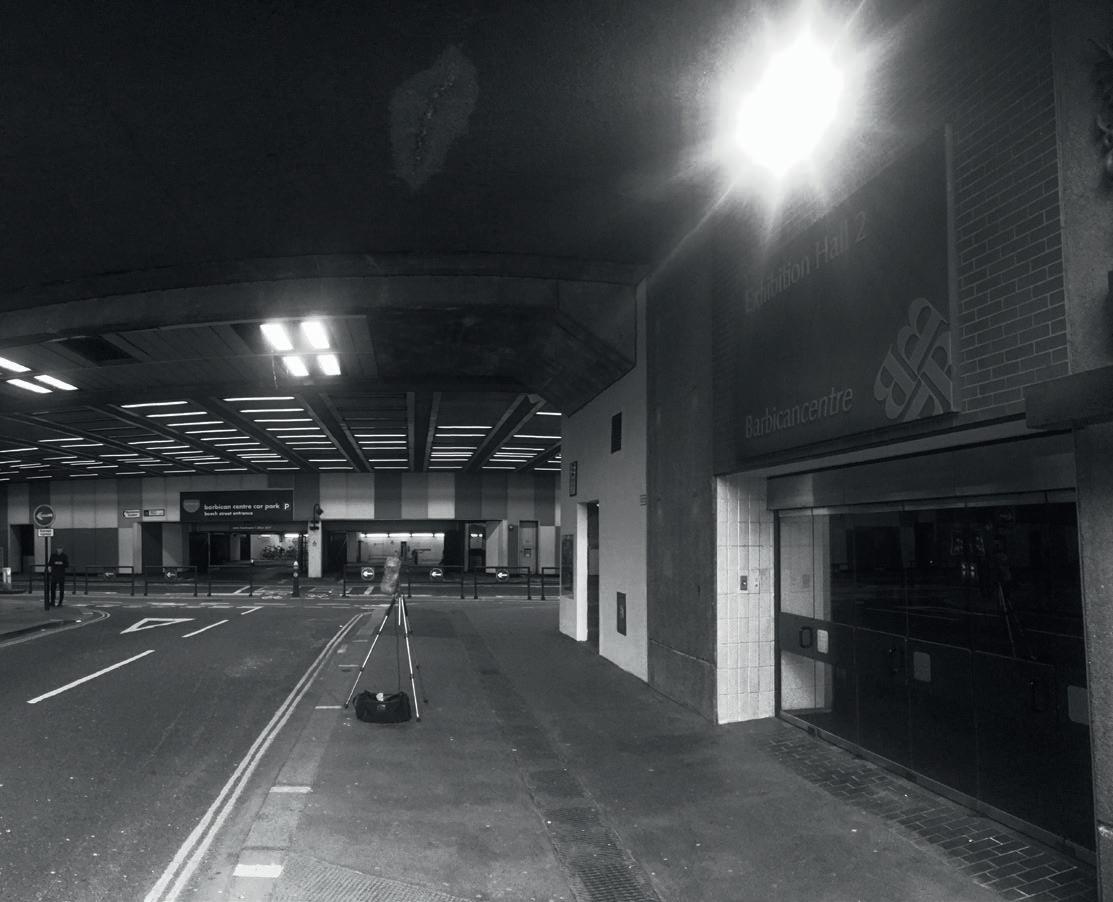
34 (overleaf) Musicity x Culture Mile, London, 2019. Acoustic Survey of Barbican Lakeside, site of Alex Ho’s ‘Upon Brick’.
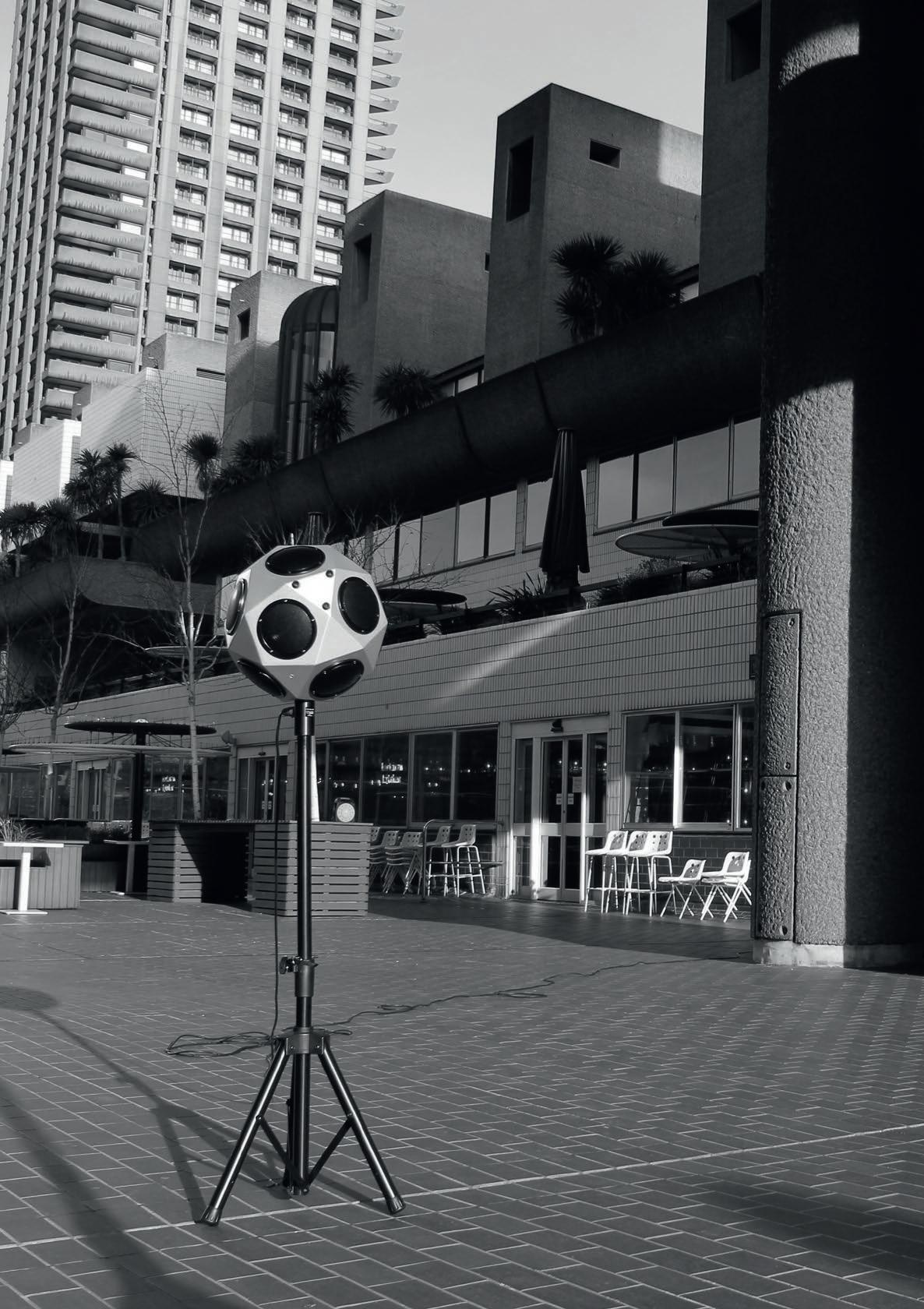
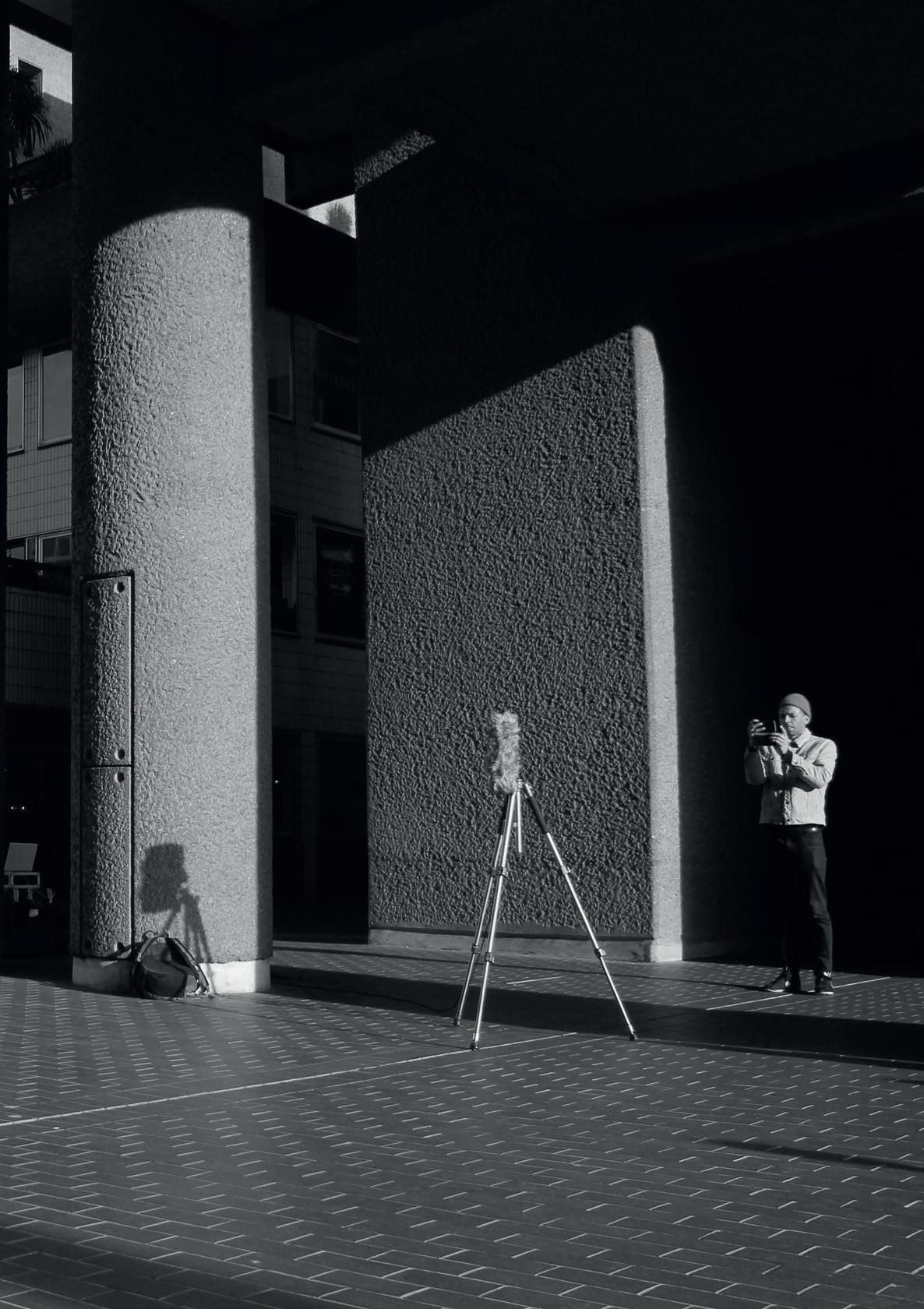
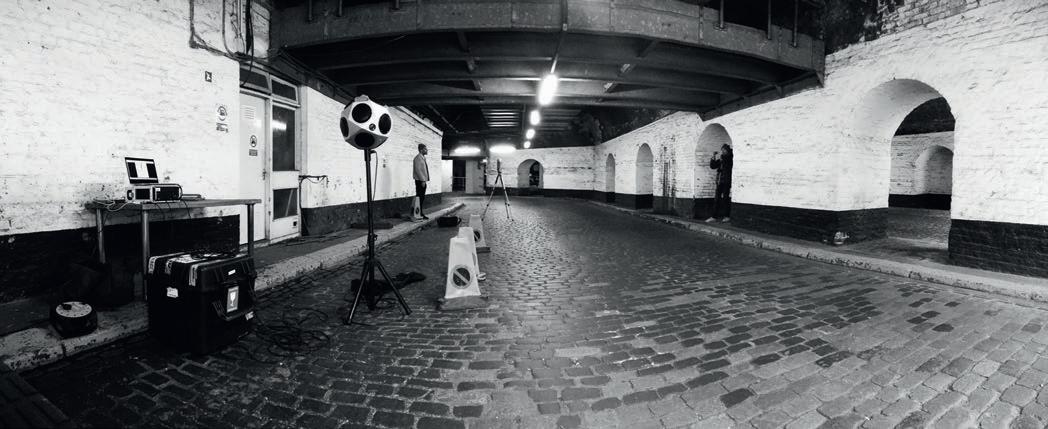
35–6 Musicity x Culture Mile, Barbican, London, 2019. Acoustic survey of Smithfield Rotunda Gardens Ramp, site of EMS Collective’s ‘Eternal Descent’.
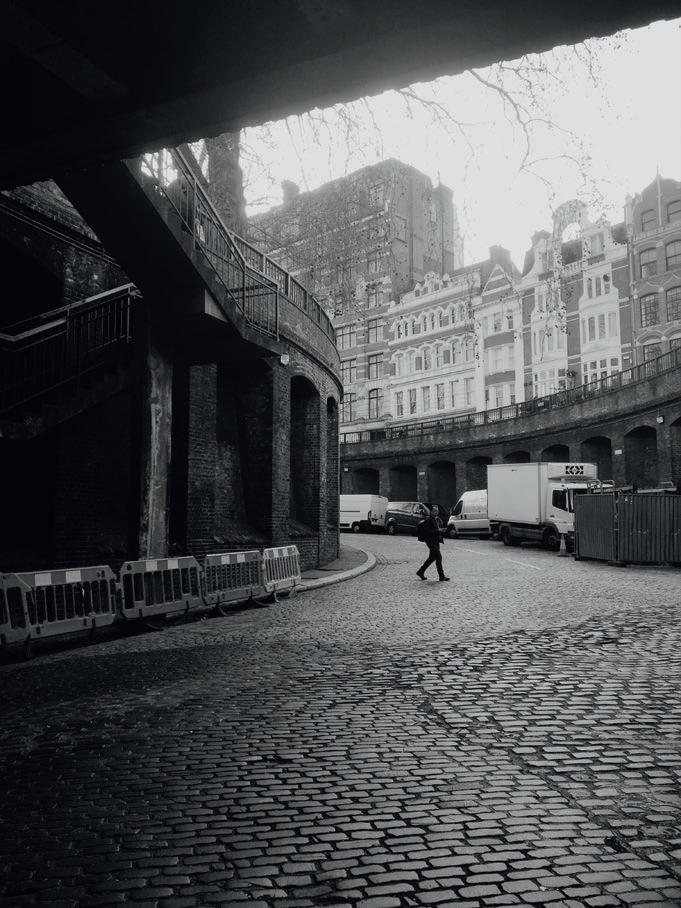
36
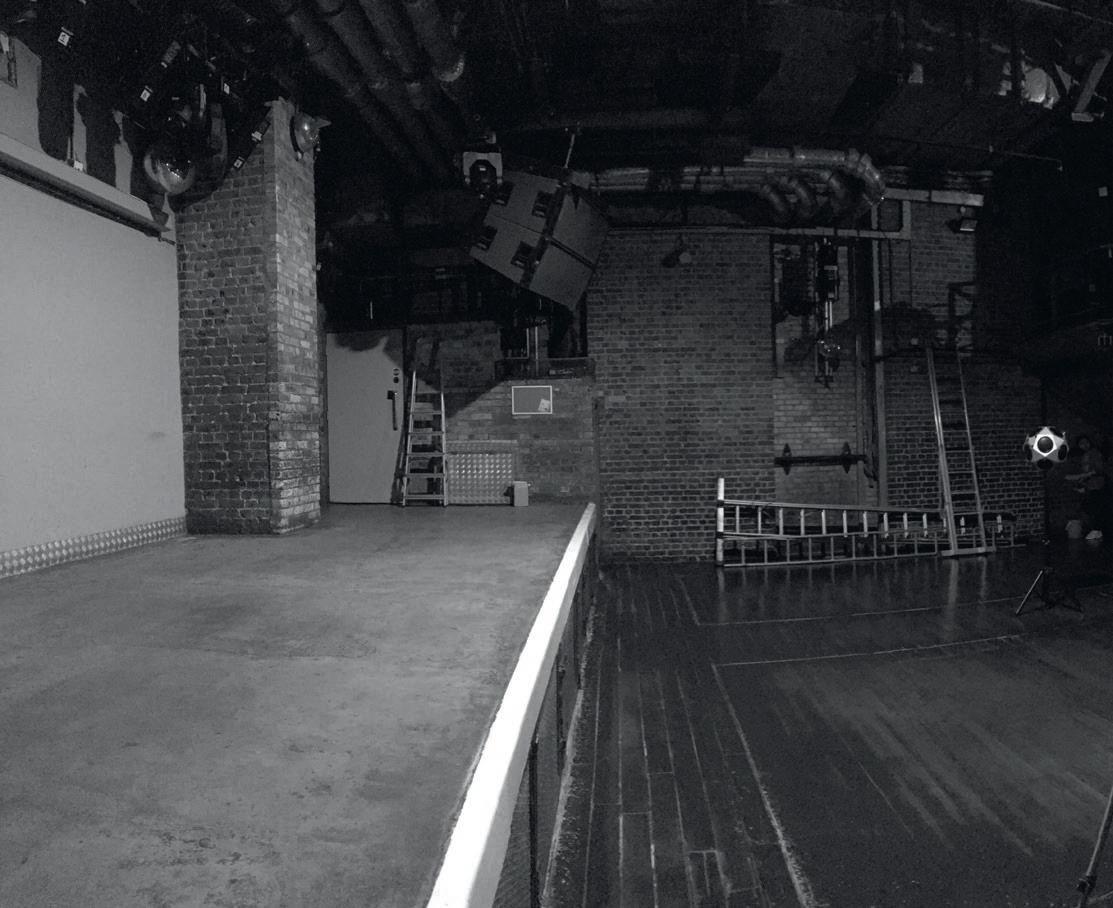
37 Musicity x Culture Mile, Barbican, London, 2019. Acoustic survey of Fabric nightclub, site of Craig Richards’ ‘At Home at Fabric’.


38 Musicity x Culture Mile, Barbican, London, 2019. Lower Ground Foyer, Barbican, site of Emma Kate Matthews’ ‘Similis’.

39 Musicity x Culture Mile, Barbican, London, 2019. The Charterhouse cloister, site of Fari B’s ‘The Visitor Book’.
4. Workshops and collaborative engagement with site owners, managers and musicians, investigating suitable sites for acoustic and musical interaction(s) and how volume and materiality can influence compositions that can be listened to on headphones or multichannel auditory systems.
MEMU
In July 2019, we undertook a series of workshops at the MEMU Earth Lab in Japan. The focus of the research was to look at the complex interrelationships of sound, space and the body. Experiments with multiple participants were undertaken, both indoors and outdoors, in order to develop a situated and environmental approach to sound.
The example documented here focuses on room acoustics and music. Due to the inaccessibility of the site, the acoustic testing methodology used a balloon-pop retort as an impulse response, rather than a full sine sweep as used previously. The results were not as high resolution but were good for sketch purposes.
40 Même by Kengo Kuma and Associates, Hokkaido, 2019.
41 (overleaf) MEMU site, Hokkaido.

40

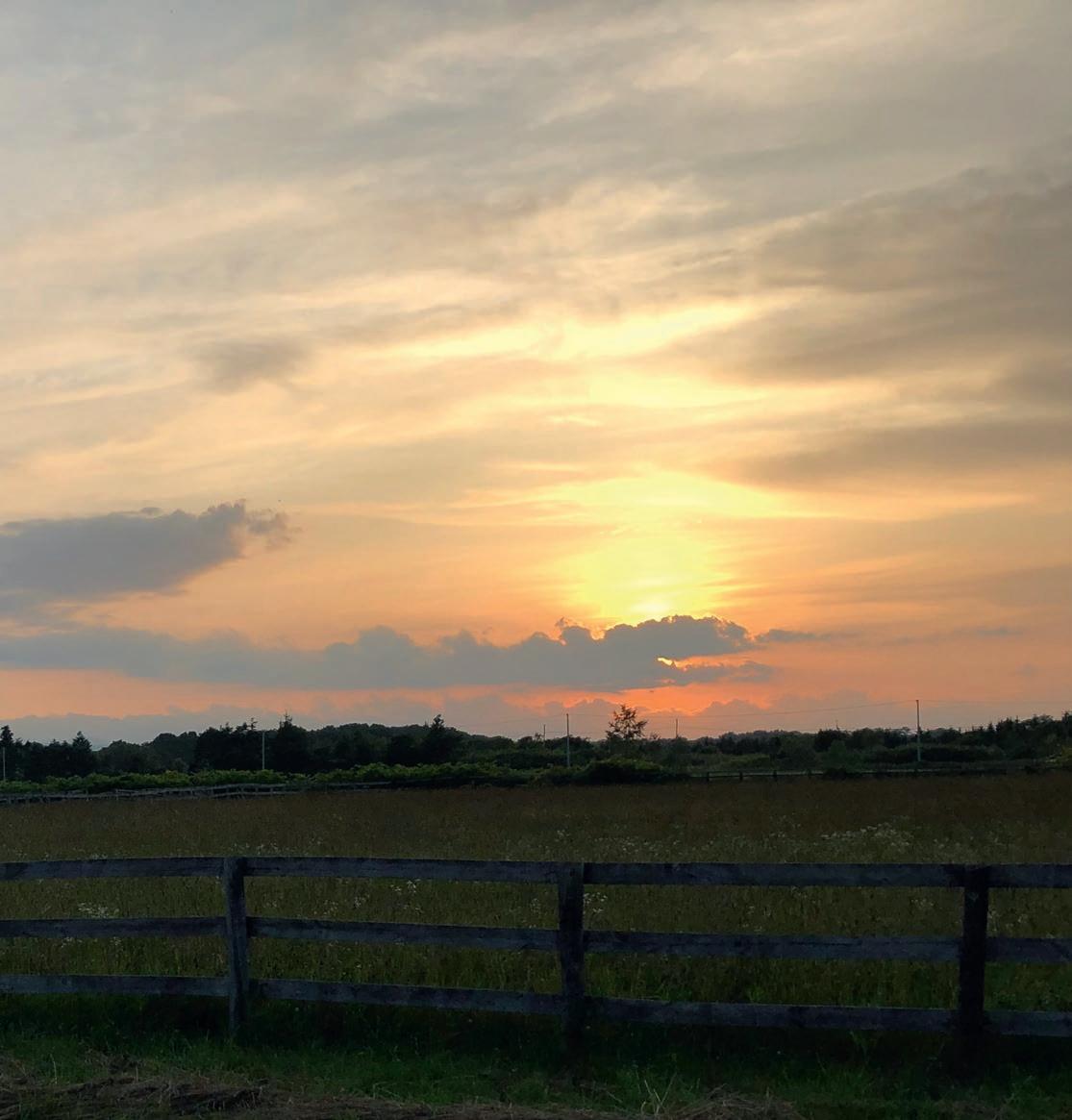
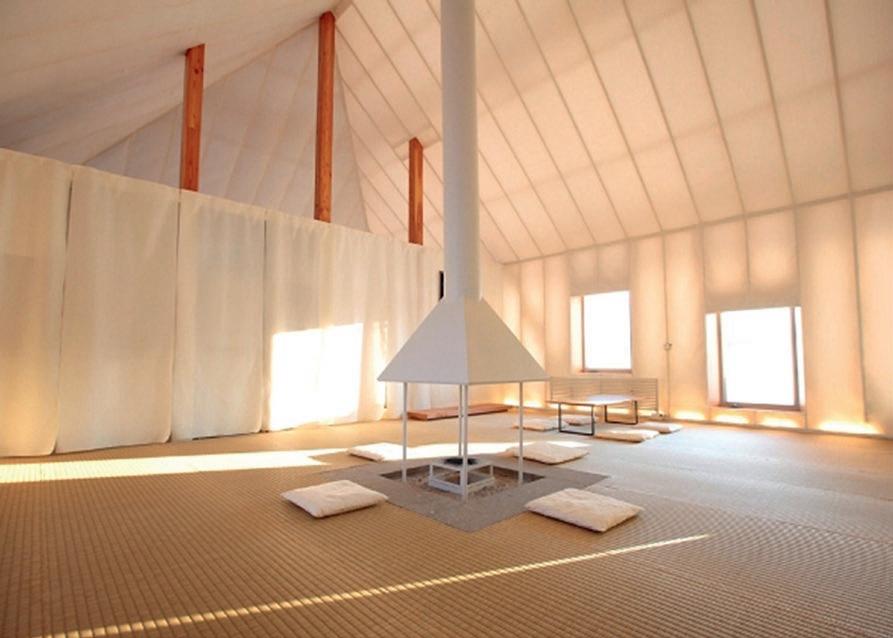
42
42 The interior of Même, Hokkaido, by Kengo Kuma and Associates, 2019. A very quiet, almost anechoic environment.
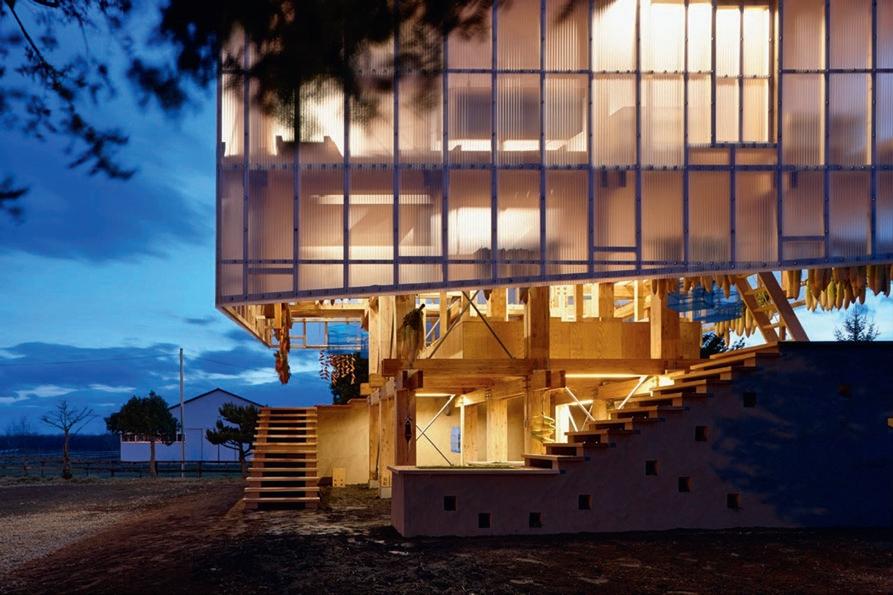
43
43 Nest We Grow by UC Berkeley College of Environmental Design at MEMU Earth Hotel, Hokkaido, 2019.
For MEMU, a series of sites were selected according to relevance, visual interest, accessibility and sound. Spaces were chosen that show a blend of rich acoustic qualities, from the intimate to the cavernous. We wanted spaces that have a voice and that could be a creative springboard for writing music. Once selected, they were acoustically tested by the workshop participants. The output of the tests provides acoustic data that can tell us how the space performs acoustically and how it could be used by others.
The impulse responses generated by the workshop attendees are available on the MEMU website and are available for open download. We have encouraged artists to use these to develop their own compositions based on the site and its architecture. We encourage the sharing of these tracks to broaden the understanding of what music works well in spaces not necessarily designed for it. This project opens up the methods defined by the Musicity project and democratises the process so that anyone with access to music-writing software can engage with situated composition.
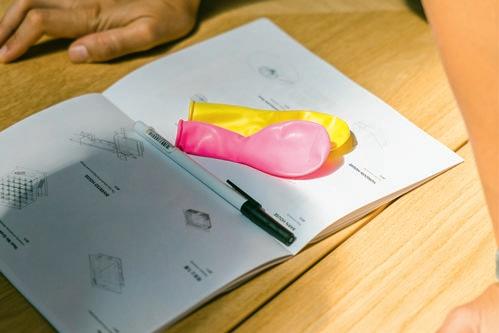

44 Planning balloon-pop acoustic tests at MEMU Earth Lab, Hokkaido, 2019.
45 Workshop in progress at MEMU Earth Lab, Hokkaido, 2019. 46–7 Balloon-pop acoustic test, MEMU Earth Lab, Hokkaido, 2019.

